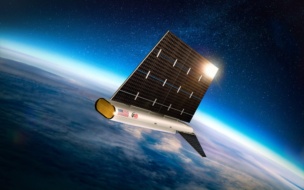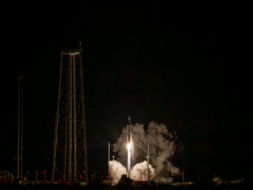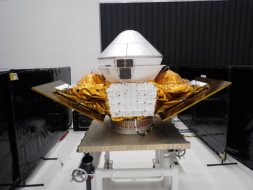BlackSky launched its first Gen-3 Earth observation satellites aboard Rocket Lab’s Electron rocket yesterday, adding higher-resolution imaging to its data offerings.
The next-gen satellite offers 35-cm resolution imaging capability and will help improve automated detection and identification for the company’s Spectra AI-powered platform. BlackSky says Gen-3’s overall performance will be three times greater than its Gen-2 satellites.
Anotha ☝️: The company also announced another international customer contract win yesterday, this time to support a ‘national spaced-based intelligence’ system. The new partnerships plus the successful Gen-3 deployment have driven the stock up 21% over the past two days.
Going global: BlackSky has scored four significant non-US contract wins in the past month:
- Jan. 28: A seven-year $100M contract with an unidentified international defense customer for Gen-2 and Gen-3 data.
- Feb. 4: Partnership agreement with geospatial intelligence company EMDYN to provide imaging data to international government customers.
- Feb. 13: An eight-figure contract to support India’s commercial EO capabilities, providing access to its Spectra remote sensing data and delivery of a satellite.
- Feb. 18: A six-figure contract with a new international customer for Gen-2 imaging and analytics.
The $BKSY stock is up 92% YTD.
International demand: While the once highly touted boom in commercial EO demand has still yet to materialize, government revenue (particularly international) remains strong.
Last year, BlackSky’s CEO told Payload, “Overseas defense budgets are increasing as a percentage of GDP. And within that dynamic, increasingly larger portions of investment are going to space-based capabilities.”
BlackSky is seeing those contracts roll in a big way.
Don’t call it SaaS? BlackSky’s recently announced contracts are all subscription-based, providing a strong base of high-margin recurring revenue over the next few years.
From the election through the end of January, the four largest EO stocks increased by an average of 143%, according to space investor analyst Case Taylor. Taylor attributes the rise to both the Trump Bump and a re-alignment of EO valuations closer to SaaS multiples, given the sector’s high-margin subscription revenue.
Cash flow: BlackSky is leveraging its fixed-cost structure to improve profitability. COGS as a percentage of revenue has improved by 12% over the prior period.
However, operating leverage does not account for the high capex ($55M-$65M per year) required to build out its Gen-3 constellation. Over the first three quarters of 2024, the company averaged a quarterly cash burn of $15M. The burn rate is slightly improved from the $17M average burn over the same period last year.




